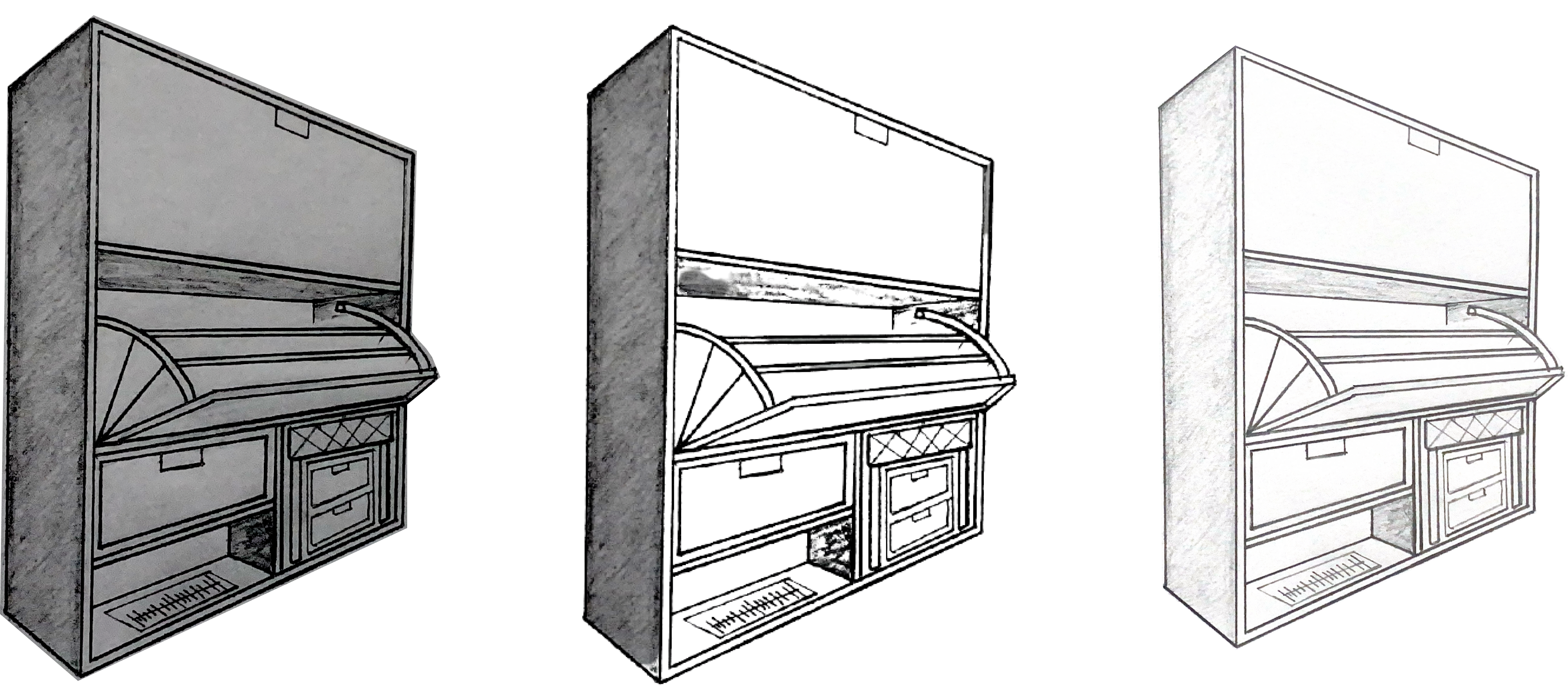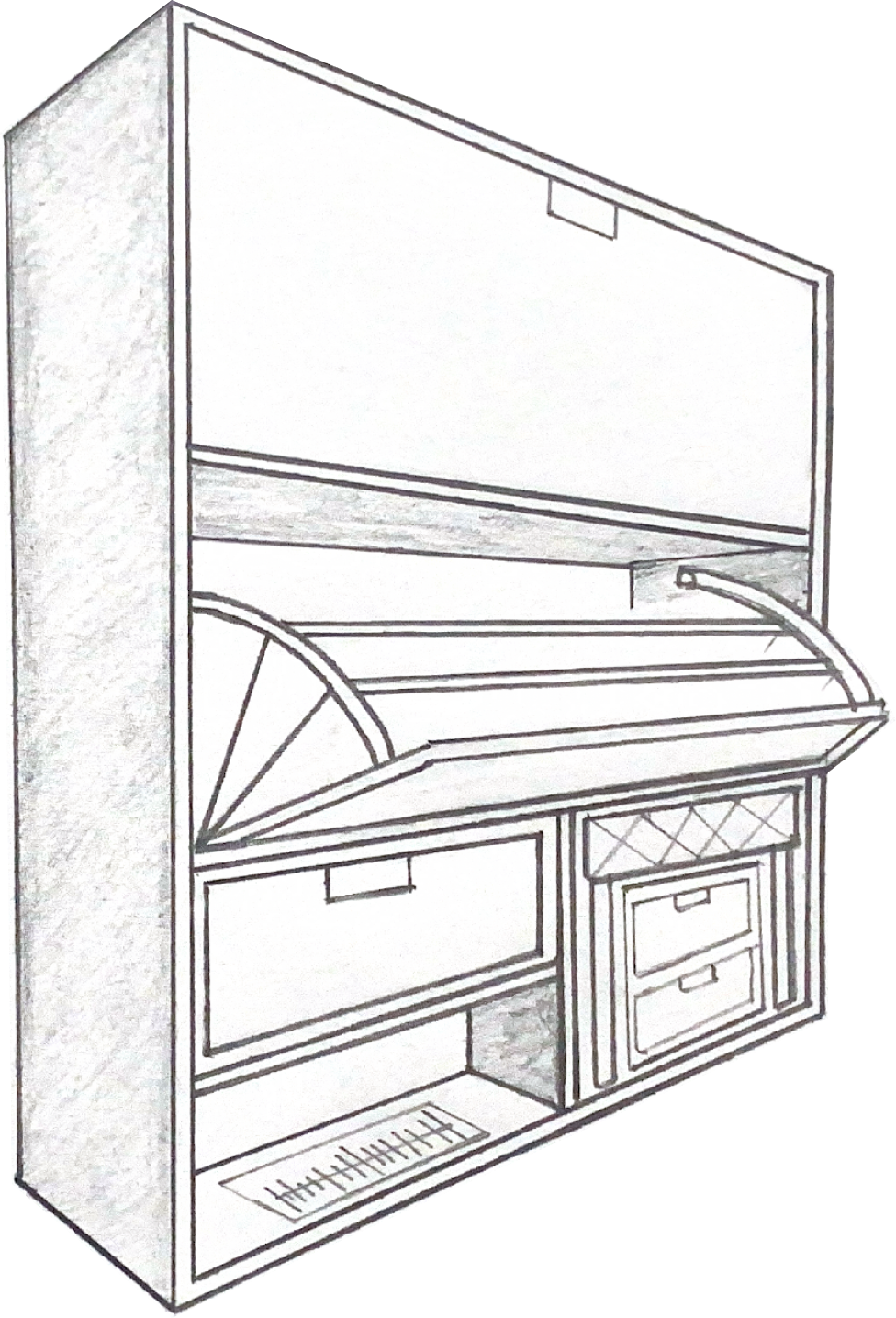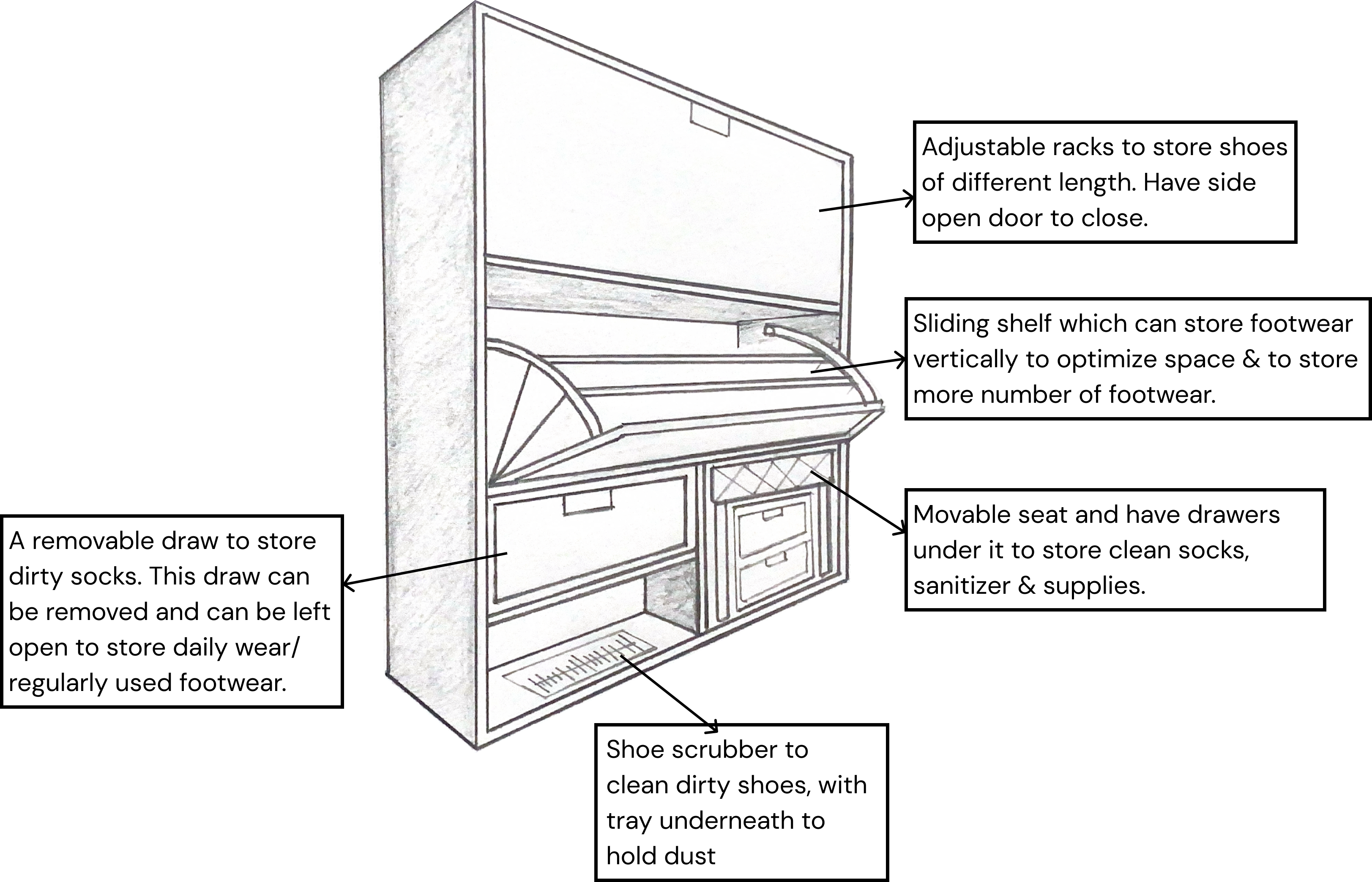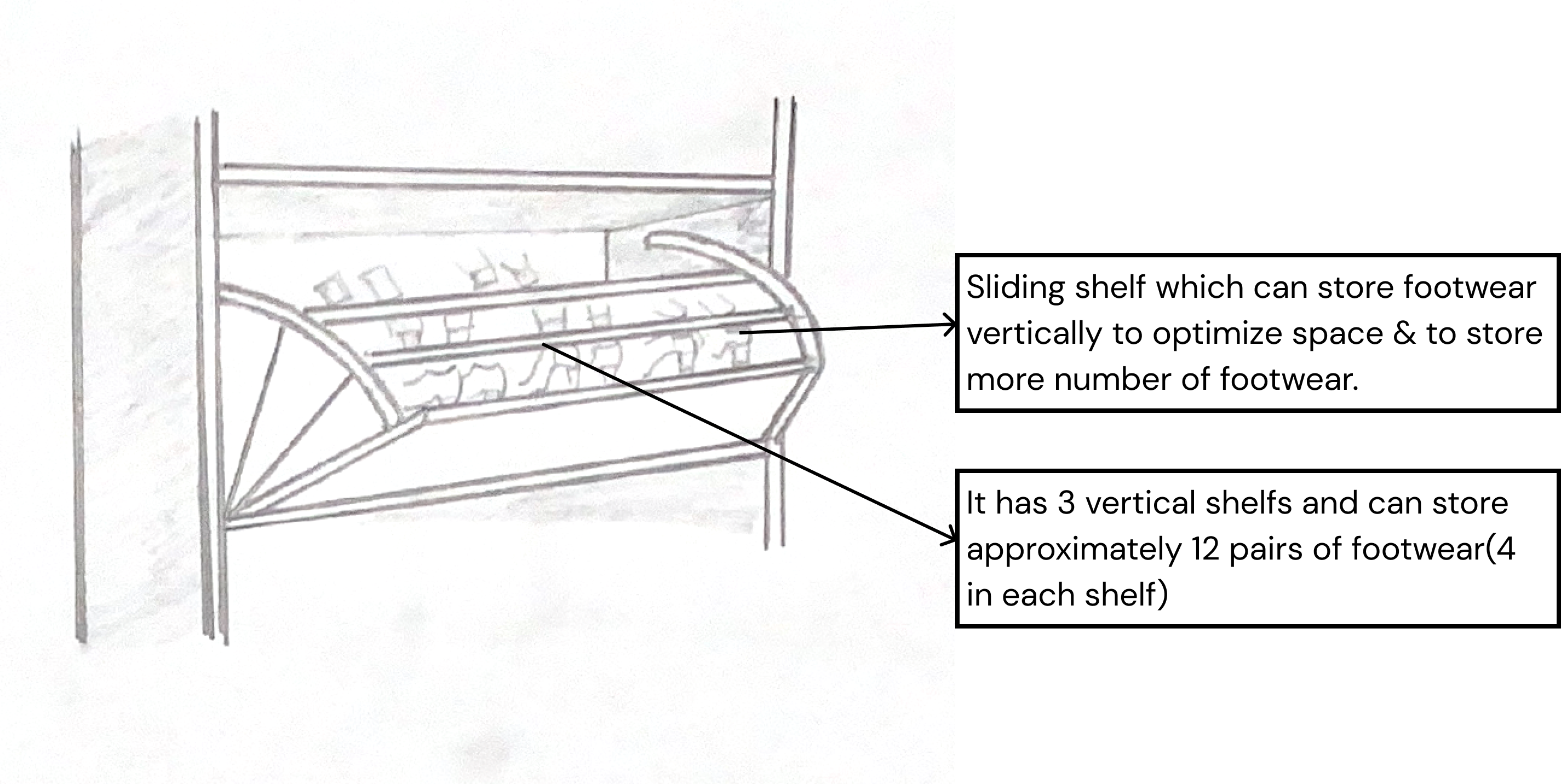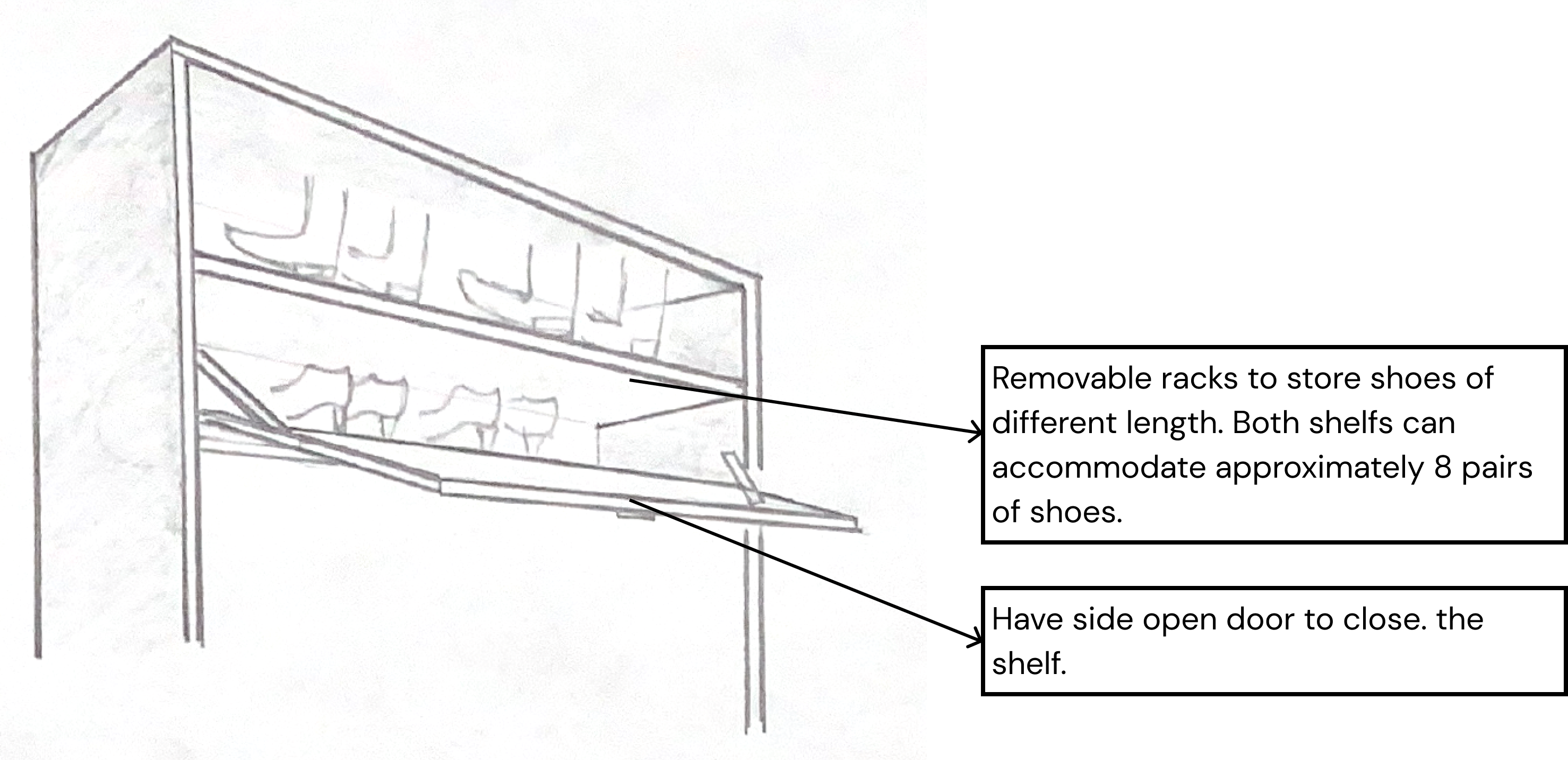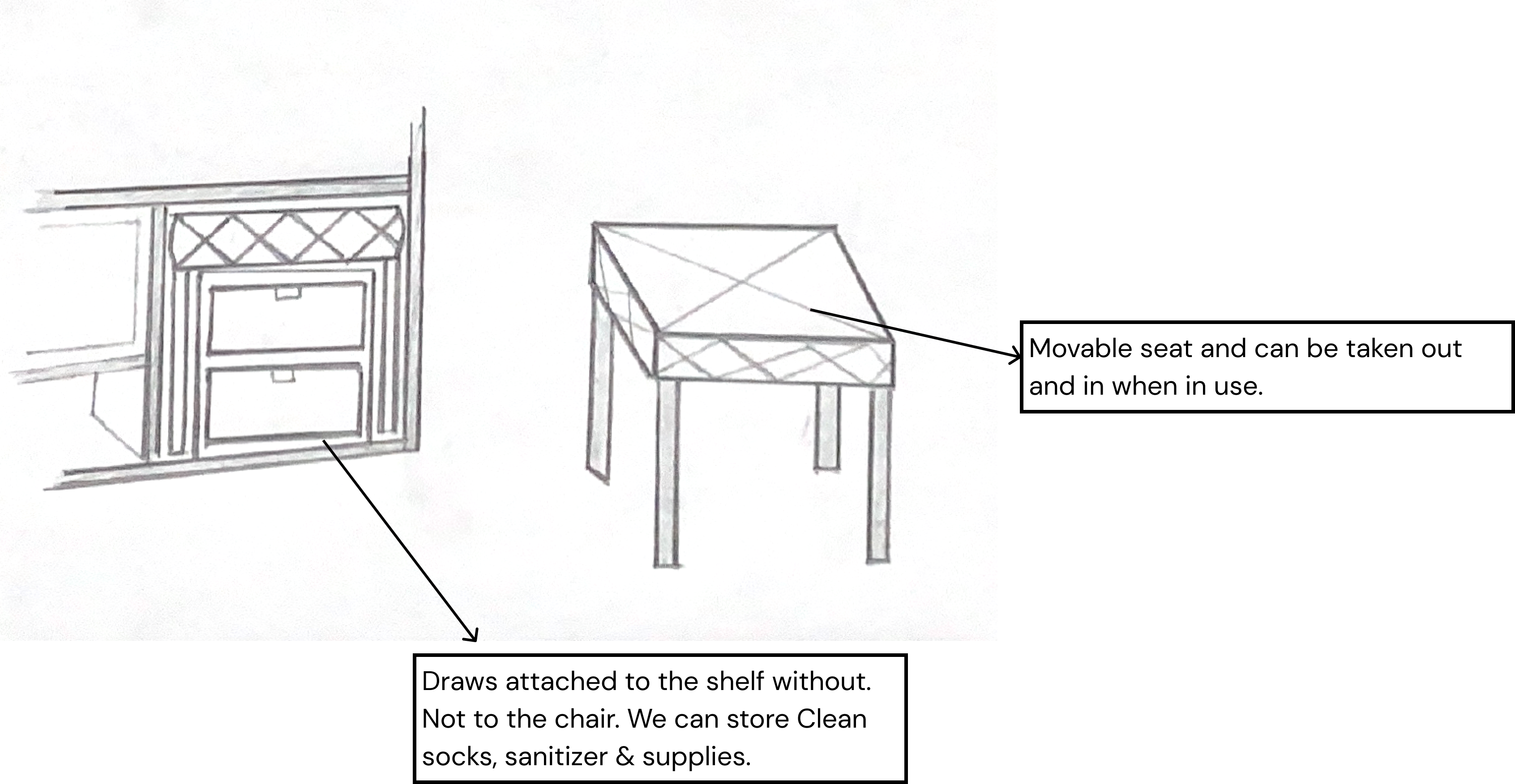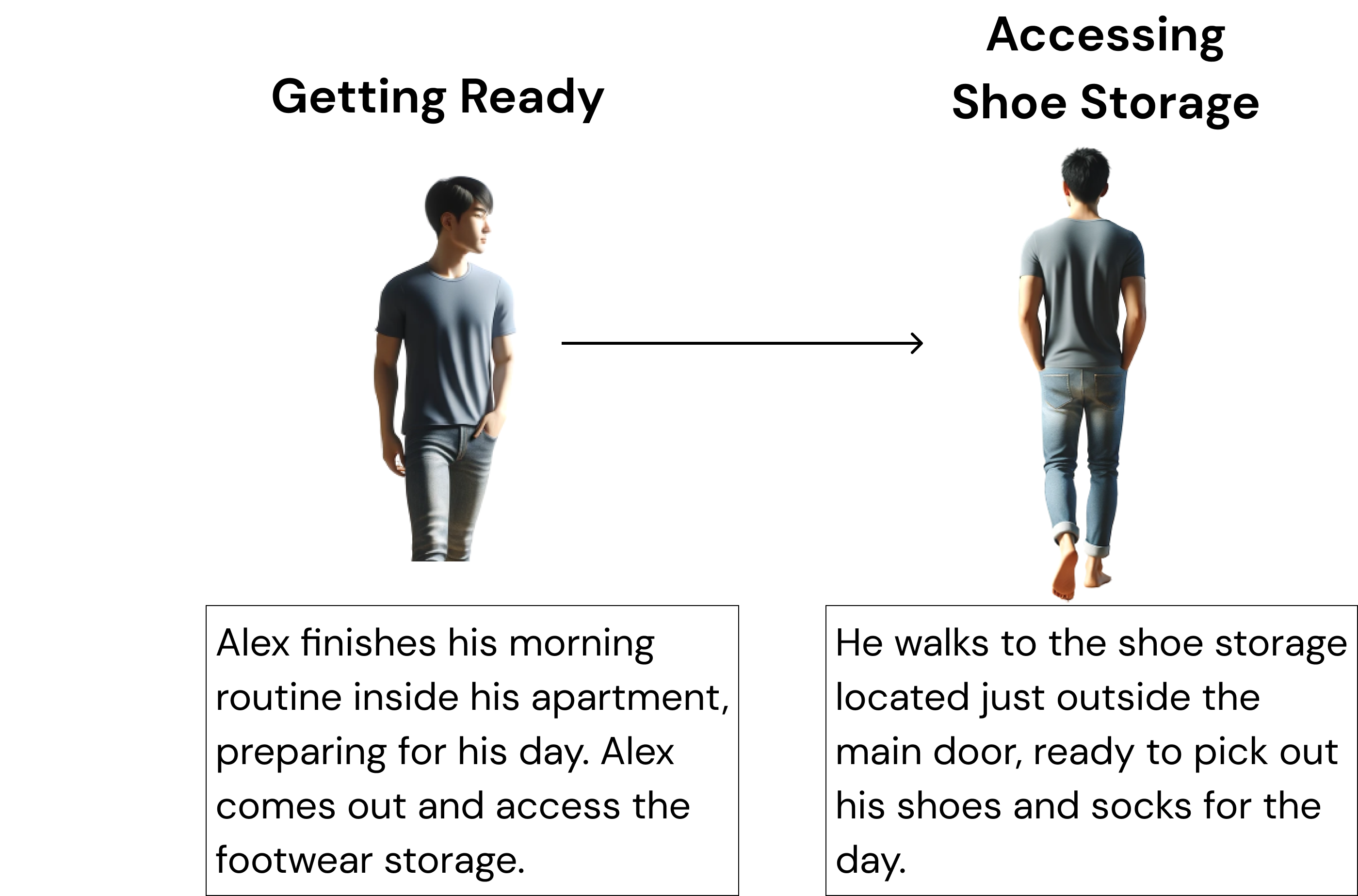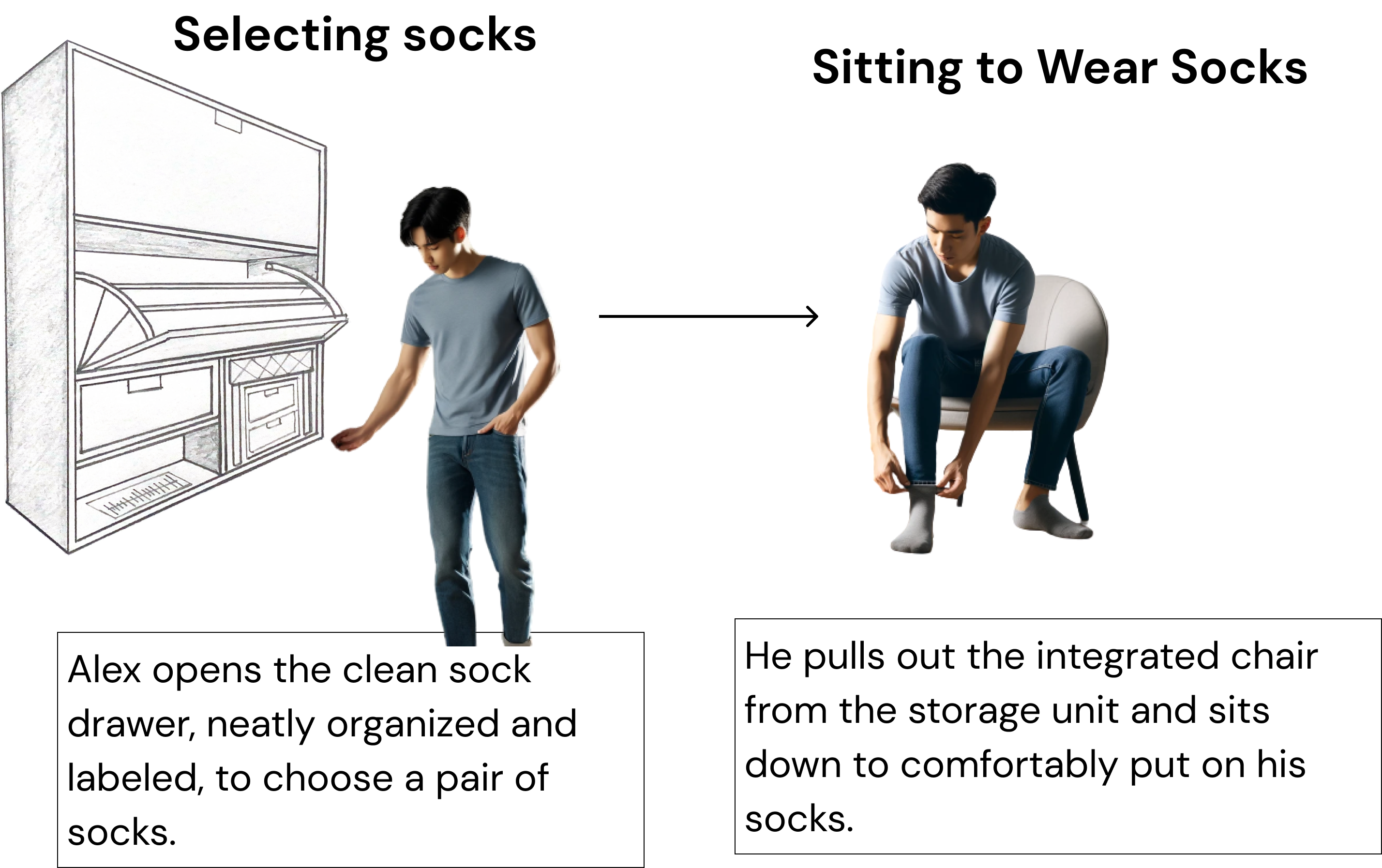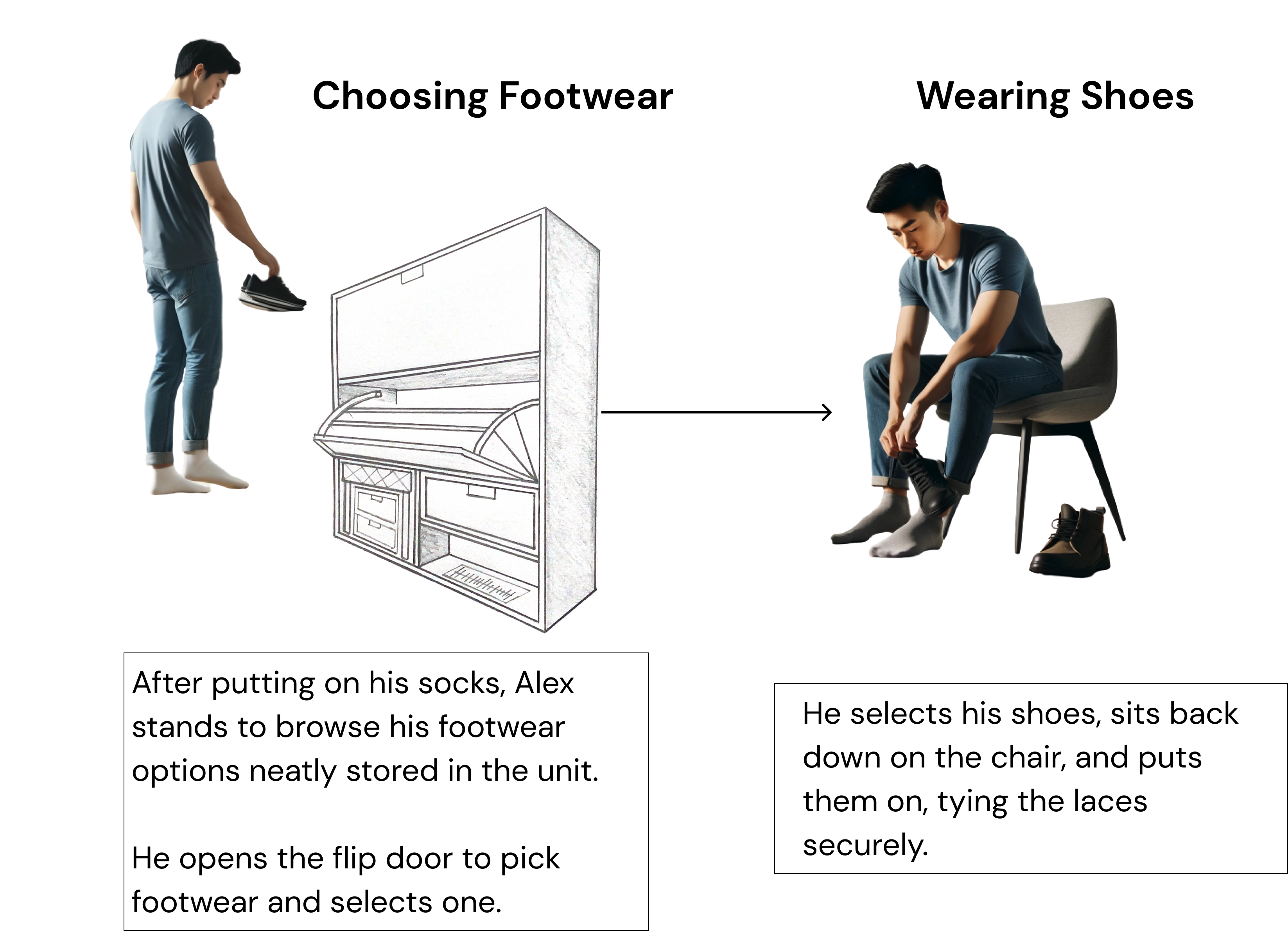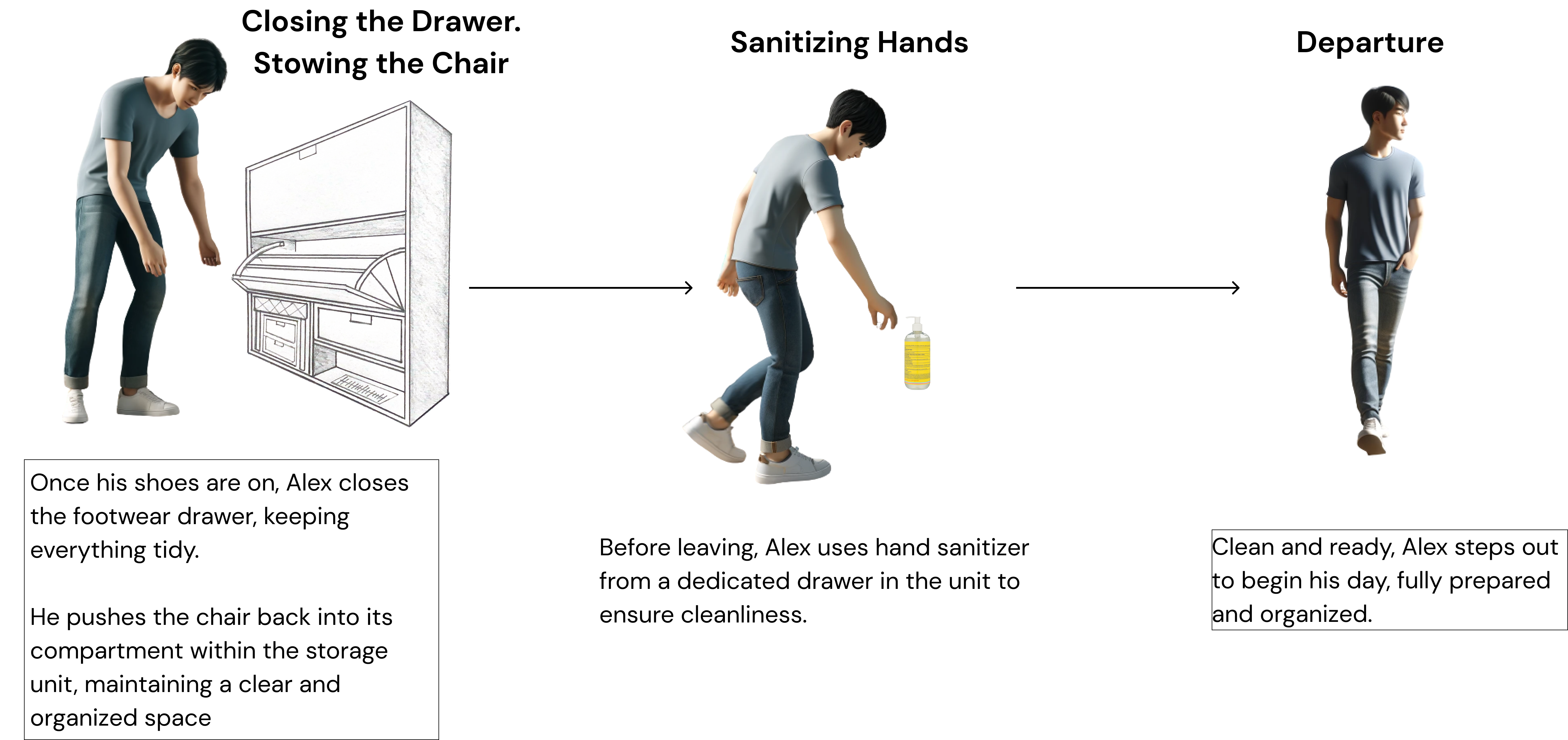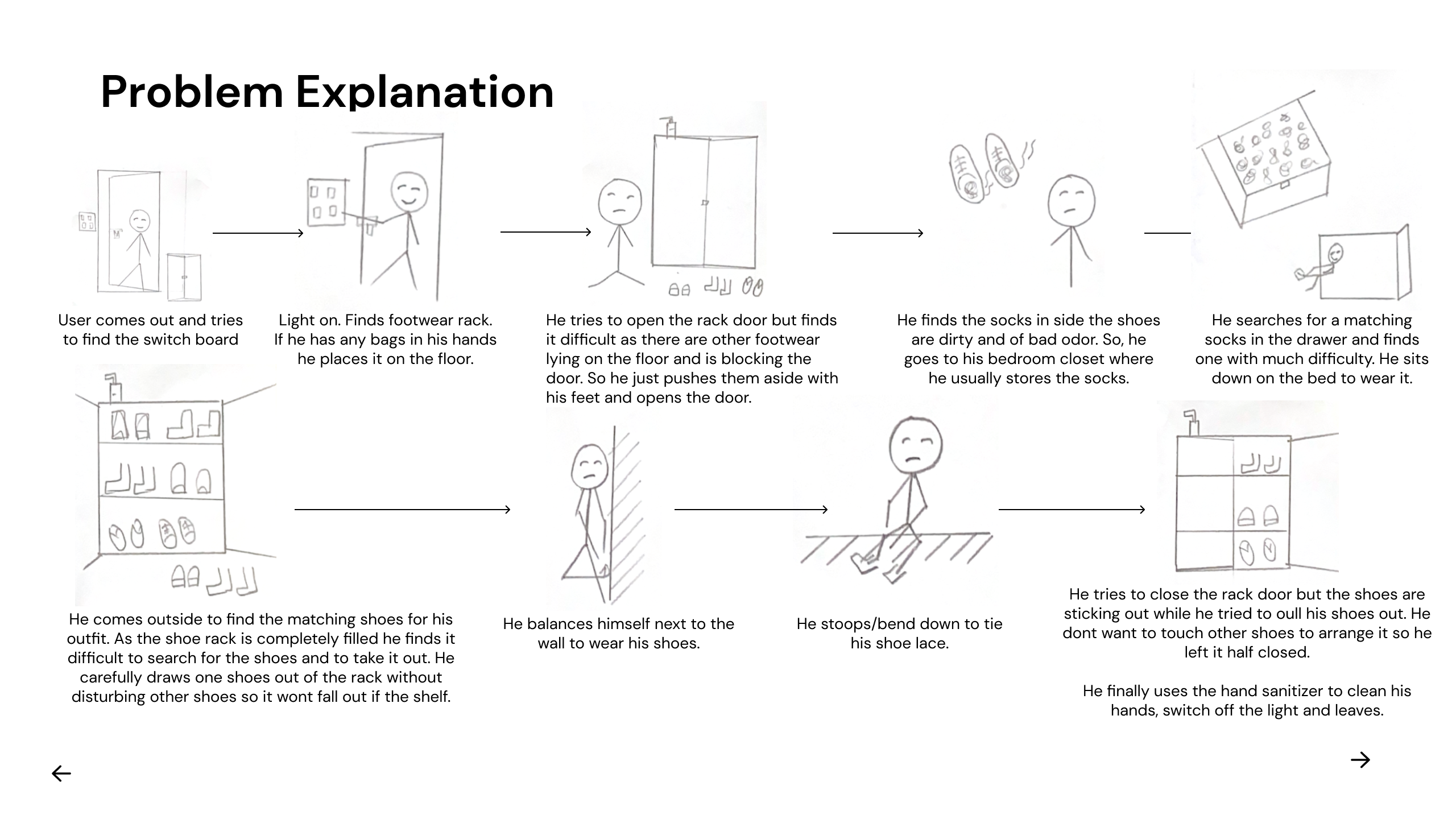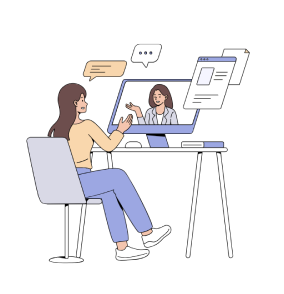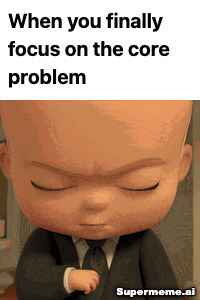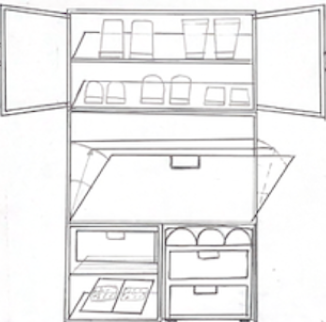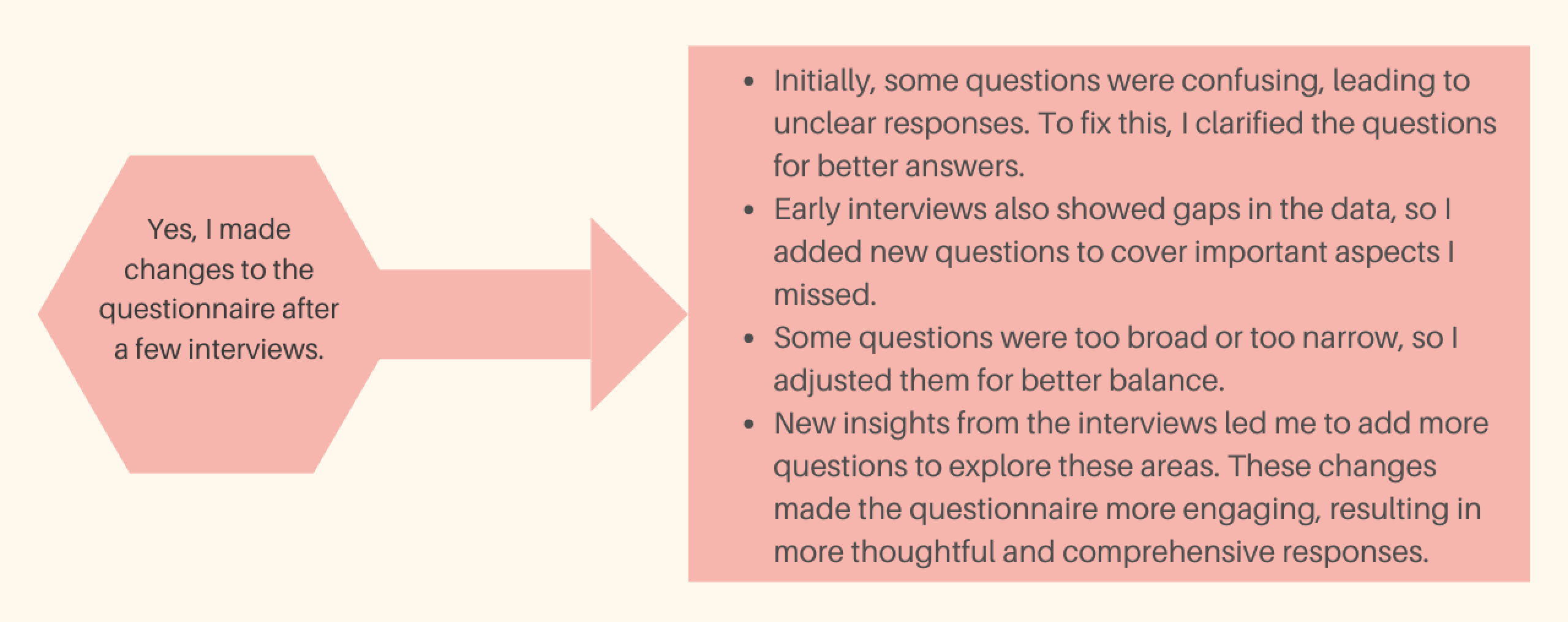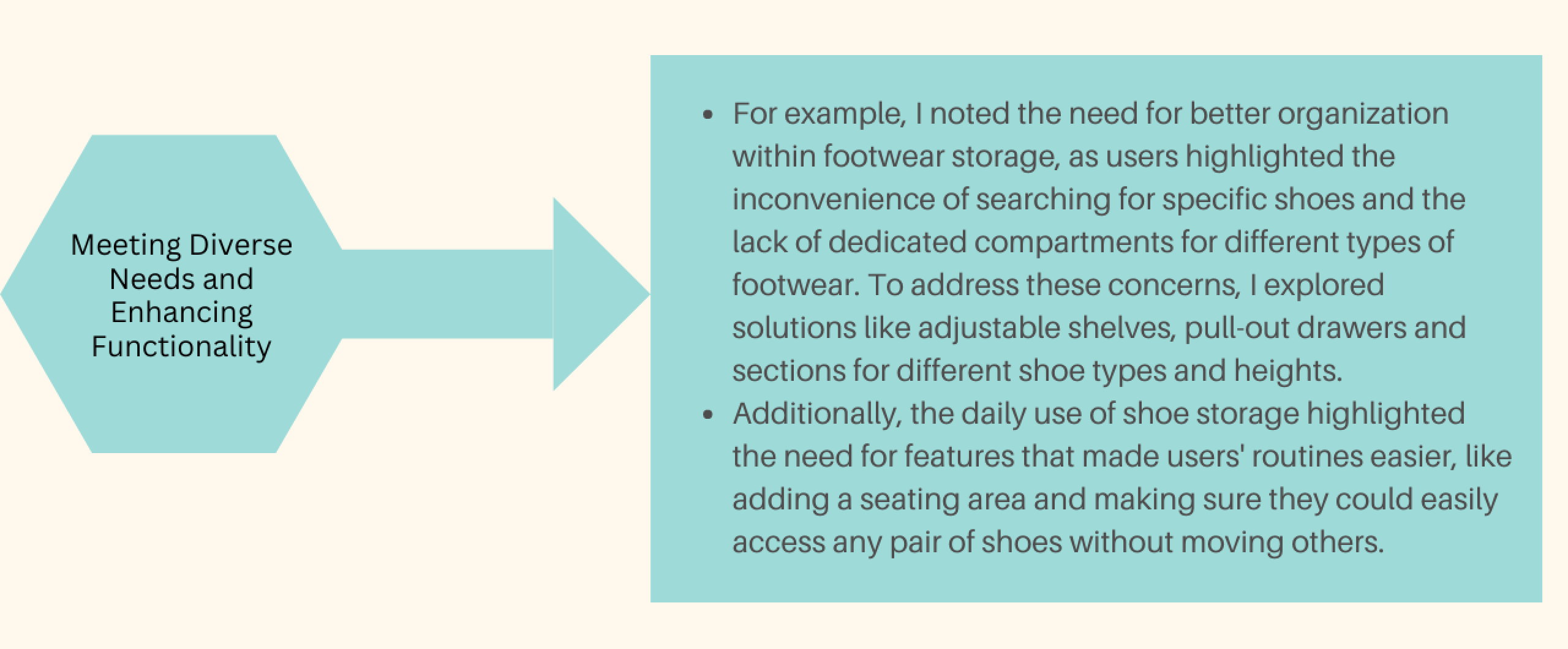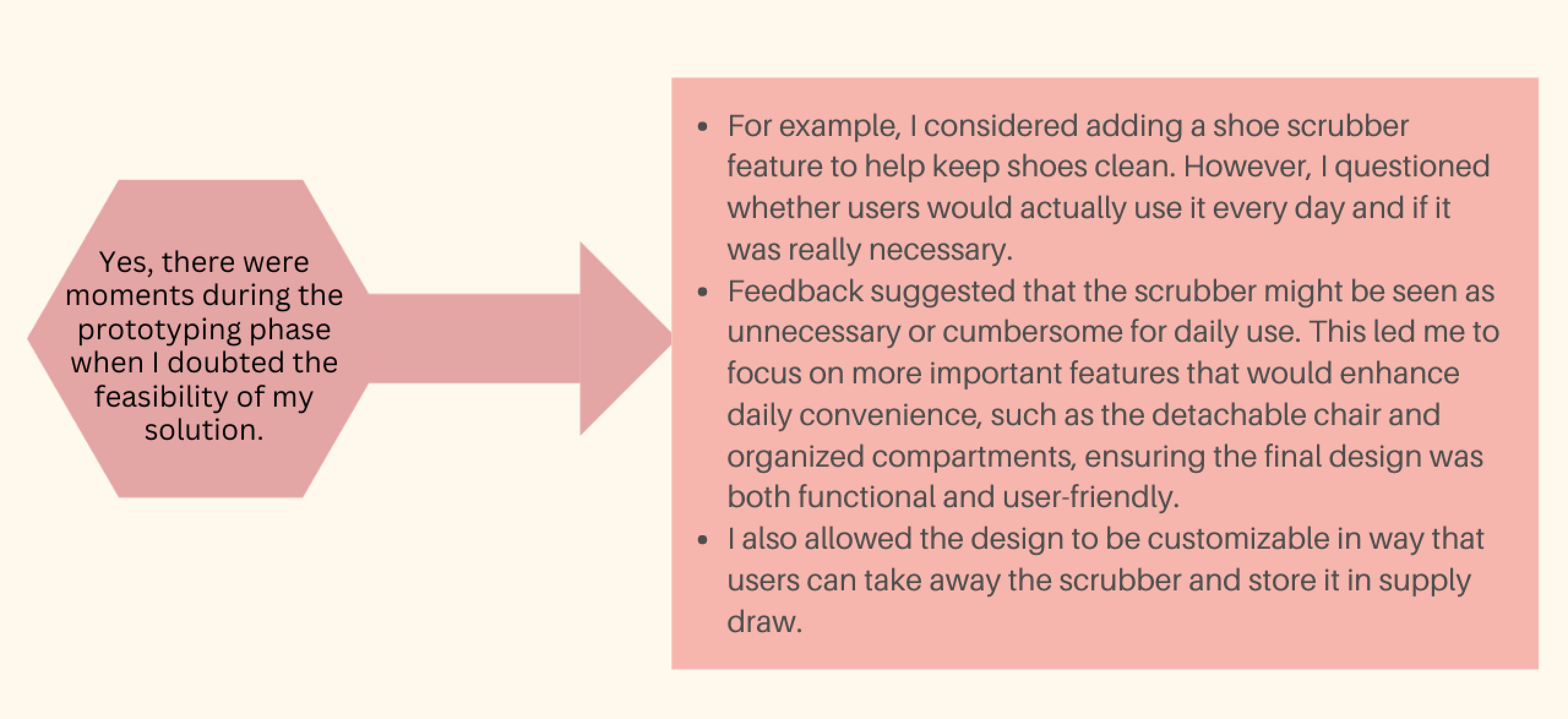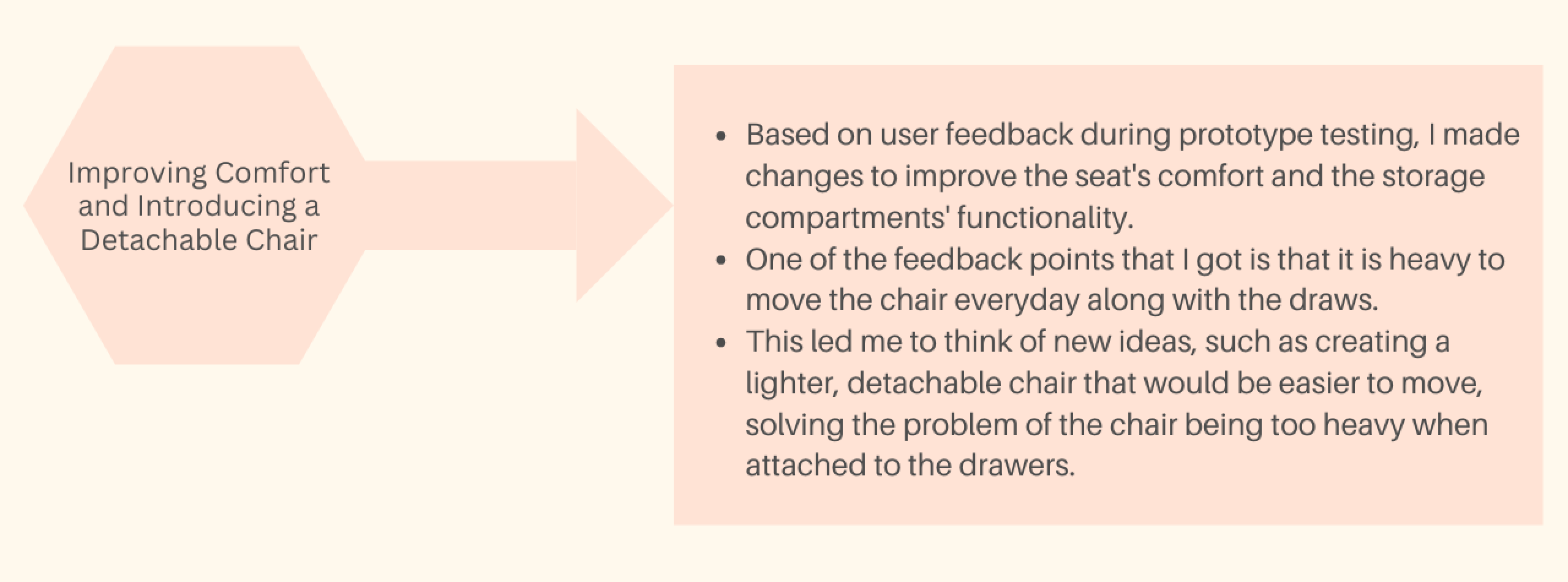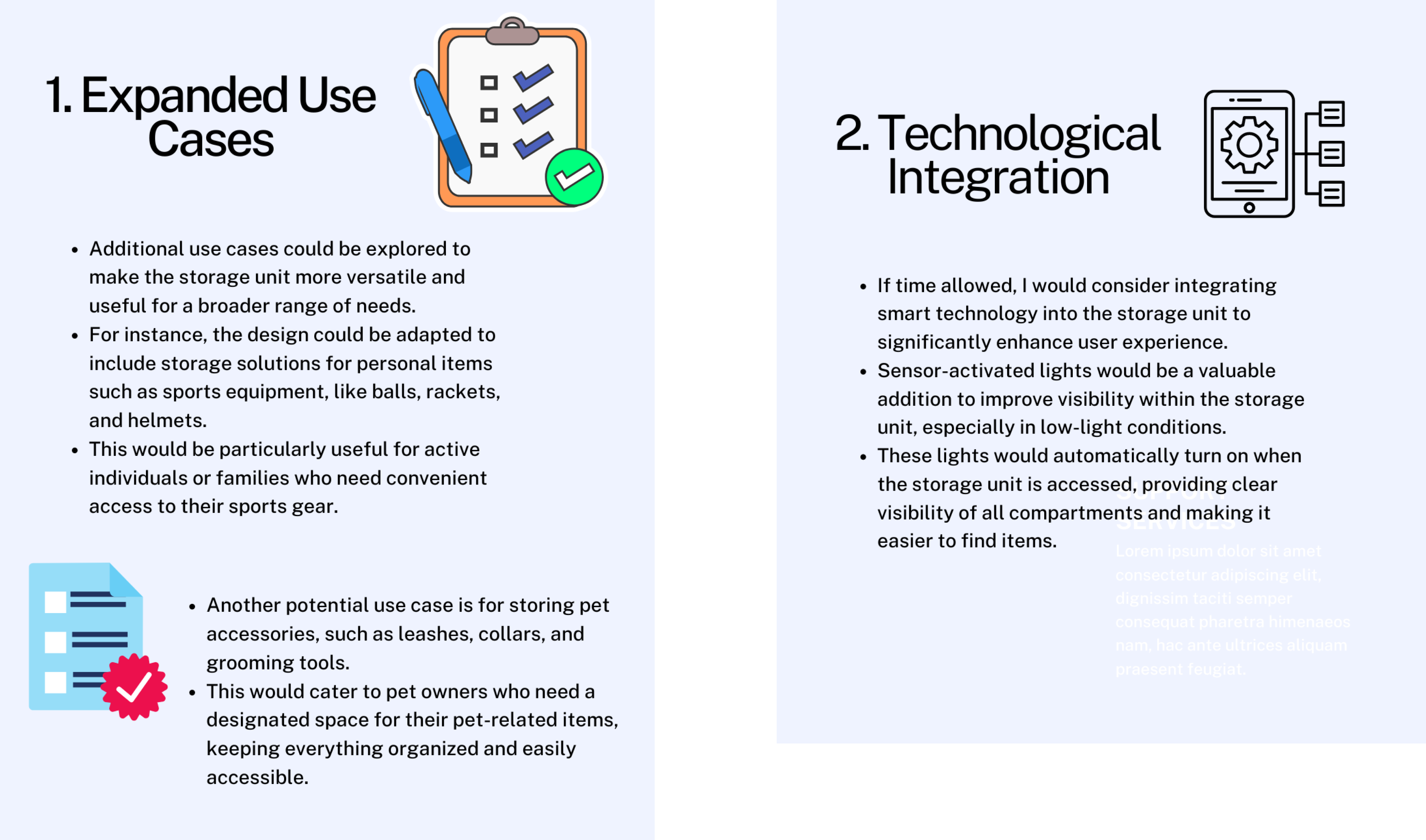1. Introduction
Hi, Welcome to the story of how I created an optimized Footwear Storage solution.
In our homes, it’s important to have storage that works well and feels comfortable. Traditional shoe racks can be a bit boring and not very cozy. This project aims to change that by creating a new shoe rack that’s not only easy to use but also has a comfortable seat and a place to keep your socks right with your shoes. The goal is to make organizing shoes and finding socks easy and comfortable for everyone.
This case study will take you through the journey of redesigning a traditional shoe rack into a more user-friendly version with added features like a comfortable seat and a sock dispenser. Based on user feedback, you’ll see plenty of pictures and design sketches that show how the shoe rack has been improved.
2. Design thoughts
Are you curious to see the optimized Footwear Storage that I have designed?
I am showcasing my final solution at the beginning of this case study to provide a clear understanding of the outcome right away. By seeing the final product first, makes it easier to understand why we made certain choices and how they helped solve the initial problems.
Here is the final prototype of the optimized footwear storage solution. This design includes integrated seating, separate compartments for clean and dirty items, and a system that allows users to access any pair of footwear without moving others.
Let’s look closely.
Key Features and Functionality
- Integrated Seating:
- A comfortable seat built into the storage unit.
- Allows users to sit while putting on or taking off their shoes.
- Separate Compartments:
- Clearly labeled sections for different types of footwear, including clean and dirty items.
- Ensures easy organization and hygiene.
- Easy Access System:
- Users can access any pair of shoes without needing to move other pairs.
- Includes a lightweight, detachable chair for convenience.
So, how our user is going to use it?
Use Cases and Scenarios.
- Daily Use: Perfect for everyday use, making it easy to keep shoes organized and quickly accessible.
- Seasonal Footwear: Separate compartments for seasonal shoes ensure they are stored properly and easy to find when needed.
- Family Use: Multiple compartments can be labeled for each family member, helping keep everyone’s shoes organized and in one place.
3. Start with Why?
Why I Designed the Optimized Footwear Storage Solution?
The core problem I aimed to solve with the optimized footwear storage solution is the inefficiency and inconvenience of traditional shoe racks.
Regular shoe racks often lack features that address common user pain points, such as limited space, poor organization, and the absence of seating for putting on shoes. These issues can lead to frustration and a cluttered living space, especially in compact apartments.
Impact on User Experience:
For users living in a busy city with a compact apartment, these problems affect daily routines due to limited space and the need for convenient storage. By addressing these issues, the optimized footwear storage solution aims to make users daily life smoother and less stressful.
Importance of Solving This Problem
Solving these problems is important for enhancing user experience and improving day-to-day efficiency.
A well-designed storage solution can:
- Save time by making it easier to find and access shoes.
- Reduce stress by keeping the living space organized and clutter-free.
- Improve hygiene by separating clean and dirty footwear.
- Provide convenience with integrated seating and easy-to-use compartments.
4. The Journey Begins
From Identifying Problems to Designing an Optimized Footwear Storage Solution.
User Research — My journey began by exploring the various storage spaces in users’ homes and understanding how they utilized these spaces.
I wanted to identify the types of storage solutions they had and the challenges they faced with their current setups.
Conducting User Interviews
I reached out to user group and each interview was conducted one-on-one to create a comfortable environment where participants could freely express their thoughts and feelings.
Gathering Insights
During these interviews, participants shared various pain points and needs regarding their home storage solutions.
From this interview notes about home storage areas, I discovered that the footwear storage area is accessed daily by users.
I decided to focus specifically on footwear storage and revised my questionnaire accordingly.
For my Final Questionnaire, I prepared a list of mostly open-ended questions to gather qualitative insights, allowing interviewees to answer freely. This questionnaire was a guide to keep the conversation on track, and also, I asked follow-up questions as needed during interview.
To empathize with users and identify the main problems they face, I followed these steps.
- To Listen Actively: I paid close attention to users’ experiences and feelings. I tried to put myself in users’ shoes to understand their perspectives better.
- Asked Open-Ended Questions: I encouraged users to share their thoughts freely.
- Probe for Details: Asked follow-up questions to understand specific examples.
- Reflect and Summarize: Repeated back users’ statements to confirm understanding.
- Identify Patterns: Looked for common themes across users’ responses.
I transformed the insights from user interviews into the root problem by reviewing interview notes, identifying patterns, analyzing pain points, considering user goals, validating insights.
By empathizing with users, I could see the problem from their perspective. These interviews highlighted several core issues:
- Space Efficiency: There is a need for storage that fits well in small apartments.
- Better Organization: Users need to quickly find and access specific shoes.
- Integrated Seating: A seating area is important for easily putting on and taking off shoes.
- Separate Compartments: To maintain hygiene, it’s necessary to avoid mixing clean and dirty shoes.
- Accessibility: The design should be user-friendly and make it easy to access shoes without moving others.
Prioritizing the Core Problem
While several issues were identified, I prioritized the core problem of creating a space-efficient, organized, and user-friendly storage solution that includes seating.
This was because the daily interaction with shoe storage had the most significant impact on users’ routines and overall living space organization.
To solve the problems identified from user feedback, I brainstormed many ideas using a technique called Crazy 8 method, which helped me think quickly and creatively.
I came up with concepts like adjustable compartments, built-in seating, and separate sections for clean and dirty shoes. The main ideas were:
- Customizable compartments to fit different types of shoes.
- Built-in seating for convenience.
- Separate sections to keep clean and dirty shoes apart.
- A compact design to save space in small apartments.
- Easy access features like sliding shelves.
Iterating on the Design
After creating the first prototypes, I tested them with users to get feedback. Users told me that the attached chair was too heavy and hard to move. They also found the prototype confusing because it had two different types of doors: sliding doors and folding doors. Based on this feedback, I made the chair lighter and detachable, so it’s easier to use. I also redesigned the compartments to include uniform sliding doors for better consistency. These changes made the storage unit more user-friendly and efficient, fitting well into small spaces and making daily routines easier.
Finalizing the Solution
Through continuous iteration and feedback, I refined the design into the final optimized footwear storage solution.
The final design includes a lightweight, detachable chair for convenience, uniform sliding doors for simplicity, and separate compartments for better organization.
It also features sections for clean and dirty shoes to maintain hygiene, a compact vertical design to save space, and sliding shelves for easy access.
5. Critical Decisions
Here are some of the important decisions that I took during the course of the project
Discussing the critical decisions is important because they show the strategic choices that had a big impact on the project’s outcome.
Highlighting these key moments helps me to illustrate the design thinking and problem-solving process more clearly.
- Why I Changed My Questionnaire During User Interviews? - Yes, I made changes to the questionnaire after a few interviews.
- How did I prioritize which insights to focus on?
- Doubts on the feasibility of my Prototype!
- Enhancing Prototype Design:
6. Future Versions
What can be the next version of the product?
While in the journey itself I identified many ideas that can be implemented in the future, also from the feedback.
So, one of the main things I understood was that No project is perfectly done, and there are always compromises made due to time constraints and there will always be iterations and changes.
Here are some of the key areas I would focus on to enhance the footwear storage solution further:
7. Learnings
Let us see what all I learnt while working on the project.
- The Importance of User-Centered Design
One of the most significant learnings from this project was the critical importance of user-centered design. Through user interviews and continuous feedback, I realized that truly understanding the users’ needs, pain points, and daily routines is essential for creating a successful product.
For instance, the feedback about the chair being too heavy led to a major design change, resulting in a lighter, detachable chair. This experience highlighted that user feedback is invaluable and must be integrated into every stage of the design process. This learning will help me ensure that future projects remain user-focused and adaptable to real-world needs.
- Iterative Design and Prototyping
The iterative nature of design and prototyping was another key insight.
Initially, I faced challenges with the prototype, such as the impracticality of the attached chair and the feasibility of additional features like the shoe scrubber.
By iterating on the design and incorporating feedback from each round of testing, I learned the importance of flexibility and adaptability in the design process.
Iterative prototyping allowed me to refine the product progressively, ensuring it met user needs more effectively. This learning will help me embrace iteration in future projects, leading to more polished and user-friendly outcomes.
8. Feedback
I appreciate you taking the time to read my case study on the optimized footwear storage solution.
I would love to hear your thoughts on the following specific aspects of my project:
Please share your feedback in the comments section of my Medium Post. Your detailed and specific feedback will be incredibly helpful as I continue to iterate and improve on my work. Thank you.
